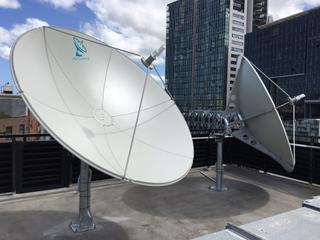NAB Urges FCC to Proceed Posthaste With Reallocating 200 MHz of C-Band Spectrum
WASHINGTON—NAB this week urged the FCC to move without delay in reallocating 200 MHz of C-band spectrum (between 3.7 and 4.3 GHz) for terrestrial wireless service. The broadcast association also asked the FCC to bar shared use of the portion of C-band spectrum not reallocated to wireless use.

In comments submitted Aug. 7, NAB cautioned the FCC that if it “caves to unreasonable and unjustified pressure” it will put the “backbone of our nation’s audio and video content delivery system” in jeopardy.
The comments, filed in response to an FCC Public Notice on how the FCC should proceed in reallocating C-band spectrum for 5G use, also pointed out that further delays will “give oxygen” to proposals that “are out of touch with reality.”
Case in point is a proposal from ACA Connects—America’s Communications Association—and others that NAB said seeks to use the C-band proceeding as a means to achieve economic and competitive advantages, said NAB.
Those include compensation for earth stations, payment to install fiber to replace C-band distribution, the go-ahead to charge content providers for fiber distribution in lieu of C-band services and long-term leverage enabling them to raise future rates, said NAB.
“By restricting or eliminating C-band and forcing content distribution to fiber, the ACA Coalition seeks to undermine intermodal competition for their new fiber services and secure a price-setting stranglehold on the content distribution business,” said NAB.
The association characterized these goals as seeking “to get paid to eliminate competition” in its comments.
Get the TV Tech Newsletter
The professional video industry's #1 source for news, trends and product and tech information. Sign up below.
Making content owners relinquish C-band distribution and turn to fiber risks causing “devastating harm” to the content ecosystem and ultimately jeopardizing the news, sports and entertainment millions of Americans enjoy, said NAB.
NAB also opposed shared use of C-band spectrum not reallocated to wireless use. “Adding new users to a reduced C-band footprint will complicate the transition for existing users and will freeze existing C-band operations in place,” said the association.
NAB’s comments are available online.
Phil Kurz is a contributing editor to TV Tech. He has written about TV and video technology for more than 30 years and served as editor of three leading industry magazines. He earned a Bachelor of Journalism and a Master’s Degree in Journalism from the University of Missouri-Columbia School of Journalism.

